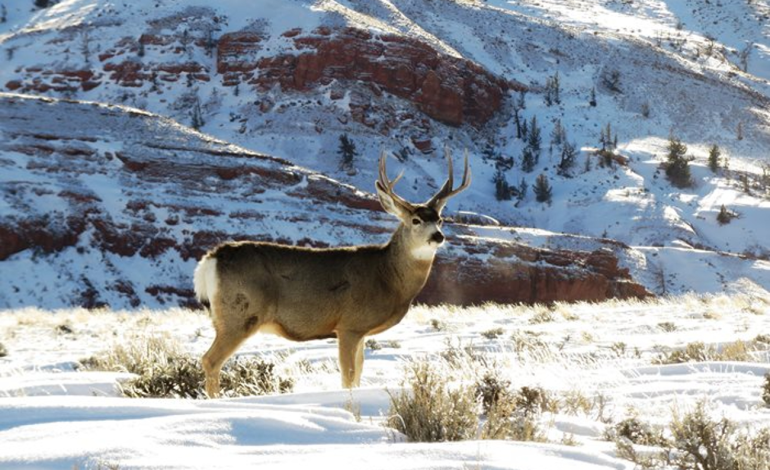Wyoming Game and Fish Conducts Annual Mule Deer Population Study

Each winter, Wyoming Game and Fish Department personnel conduct aerial surveys to assess the status of mule deer populations across the state, Oil City News reports.
In late December, wildlife managers in the Jackson and Pinedale regions took to the skies to collect classification data for the Wyoming Range and Sublette mule deer herds. These surveys, part of ongoing research efforts, help provide insight into population trends and guide recommendations for hunting seasons.
Managers continue to monitor the recovery of mule deer populations in the Wyoming Range and Sublette herds following the severe winter of 2022–23, which led to above-average mortality. The data collected through aerial surveys, along with long-term research, are vital for understanding herd dynamics and making informed decisions regarding future wildlife management practices.
Research on the Wyoming Range Herd, conducted in partnership with the University of Wyoming’s Monteith Shop, shows that mule deer entered this winter in strong physical condition. The average body fat percentage of adult female mule deer captured in the fall of 2024 was 12.9%, slightly lower than the 15.8% recorded in fall 2023, the highest since the study began in 2013. Additionally, researchers measured an average birth mass of 7.7 pounds for fawns born in the Wyoming Range, the largest average since 2016.
Wildlife biologist Gary Fralick explains that factors such as drought and extreme winters can significantly impact the quantity and quality of forage available to mule deer, affecting their body condition heading into winter.
“High precipitation zones that approach 30 inches or more on Wyoming Range mule deer summer ranges allow a diversity of plants to grow, which enables doe deer to produce and care for viable and healthy fawns,” said Fralick.
In addition to favorable weather conditions, the last two winters have been relatively mild with low snowfall, allowing deer to access a broader range of forage and contributing to high over-winter survival rates.
“Deer are able to disperse over the entire winter range because of the low snow accumulations, and therefore maximize the use of forage at elevations that approach 9,000 feet on winter ranges,” Fralick noted.
The results from the December aerial classification surveys showed positive signs for both herds. In the Wyoming Range Herd, which includes hunt areas 134, 135, and 143–145, the survey recorded 4,902 mule deer, marking a notable increase in fawn ratios. There were 83 fawns for every 100 does, up from just 34 fawns per 100 does in 2023. The overall buck-to-doe ratio also increased to 28 bucks per 100 does, approaching the herd’s objective of 30–45 bucks per 100 does. The yearling buck ratio rose to 9 bucks per 100 does, contributing to the overall increase in the buck ratio.
In the Sublette Herd, which spans winter ranges in several hunt areas, biologists recorded 7,645 mule deer during the survey. Similar to the Wyoming Range survey, the fawn ratio was notably high, with 76 fawns per 100 does—the highest ratio observed in the Sublette Herd since 2006. The buck-to-doe ratio remained stable at 34 bucks for every 100 does, with a slight increase in yearling bucks to 10 per 100 does, and a decrease in adult bucks to 23 per 100 does.
Fralick highlighted the resilience of both herds, which have previously recovered quickly from periods of high winter mortality.
“During those times, the mild and open winter conditions led to high over-winter survival rates for mule deer and rapid recovery of the populations,” he said.
As the Wyoming Range and Sublette mule deer herds continue to recover, wildlife managers will assess the appropriate hunting season structures.
“As these herds recover, our hunting seasons will be adjusted to maximize opportunities while still meeting herd unit objectives, such as maintaining appropriate buck ratios,” explained Dean Clause, wildlife biologist for the Pinedale Region.







